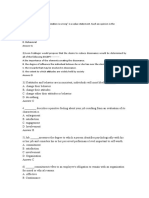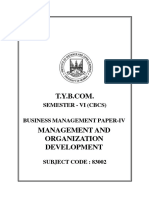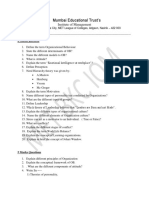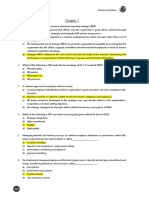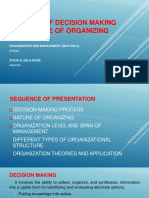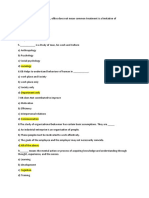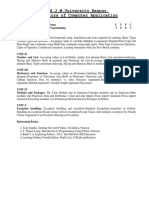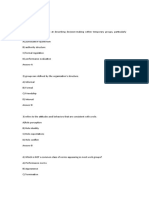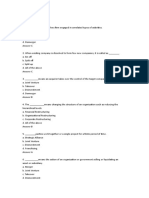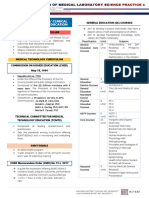0% found this document useful (0 votes)
365 views12 pagesOrganizational Behavior Quiz Guide
The document discusses organizational behavior (OB) and related concepts. It provides multiple choice questions and answers about OB topics like workforce diversity, levels of analysis in OB models, characteristics of human output, challenges and opportunities in OB, advantages of diversity, and diversity training programs. OB is presented as a field of study backed by research and theory with a growing concern for people in the workplace.
Uploaded by
animesh_anushCopyright
© © All Rights Reserved
We take content rights seriously. If you suspect this is your content, claim it here.
Available Formats
Download as DOCX, PDF, TXT or read online on Scribd
0% found this document useful (0 votes)
365 views12 pagesOrganizational Behavior Quiz Guide
The document discusses organizational behavior (OB) and related concepts. It provides multiple choice questions and answers about OB topics like workforce diversity, levels of analysis in OB models, characteristics of human output, challenges and opportunities in OB, advantages of diversity, and diversity training programs. OB is presented as a field of study backed by research and theory with a growing concern for people in the workplace.
Uploaded by
animesh_anushCopyright
© © All Rights Reserved
We take content rights seriously. If you suspect this is your content, claim it here.
Available Formats
Download as DOCX, PDF, TXT or read online on Scribd
/ 12




